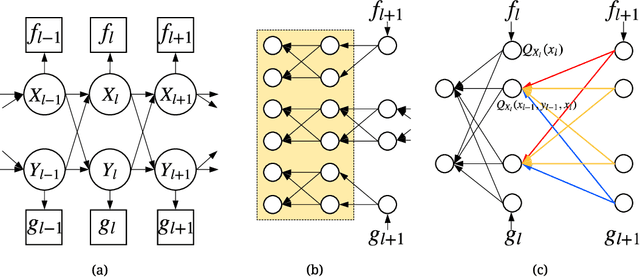Songpeng Zu
Modeling Attention Flow on Graphs
Nov 01, 2018



Abstract:Real-world scenarios demand reasoning about process, more than final outcome prediction, to discover latent causal chains and better understand complex systems. It requires the learning algorithms to offer both accurate predictions and clear interpretations. We design a set of trajectory reasoning tasks on graphs with only the source and the destination observed. We present the attention flow mechanism to explicitly model the reasoning process, leveraging the relational inductive biases by basing our models on graph networks. We study the way attention flow can effectively act on the underlying information flow implemented by message passing. Experiments demonstrate that the attention flow driven by and interacting with graph networks can provide higher accuracy in prediction and better interpretation for trajectories reasoning.
Backprop-Q: Generalized Backpropagation for Stochastic Computation Graphs
Jul 25, 2018



Abstract:In real-world scenarios, it is appealing to learn a model carrying out stochastic operations internally, known as stochastic computation graphs (SCGs), rather than learning a deterministic mapping. However, standard backpropagation is not applicable to SCGs. We attempt to address this issue from the angle of cost propagation, with local surrogate costs, called Q-functions, constructed and learned for each stochastic node in an SCG. Then, the SCG can be trained based on these surrogate costs using standard backpropagation. We propose the entire framework as a solution to generalize backpropagation for SCGs, which resembles an actor-critic architecture but based on a graph. For broad applicability, we study a variety of SCG structures from one cost to multiple costs. We utilize recent advances in reinforcement learning (RL) and variational Bayes (VB), such as off-policy critic learning and unbiased-and-low-variance gradient estimation, and review them in the context of SCGs. The generalized backpropagation extends transported learning signals beyond gradients between stochastic nodes while preserving the benefit of backpropagating gradients through deterministic nodes. Experimental suggestions and concerns are listed to help design and test any specific model using this framework.
 Add to Chrome
Add to Chrome Add to Firefox
Add to Firefox Add to Edge
Add to Edge